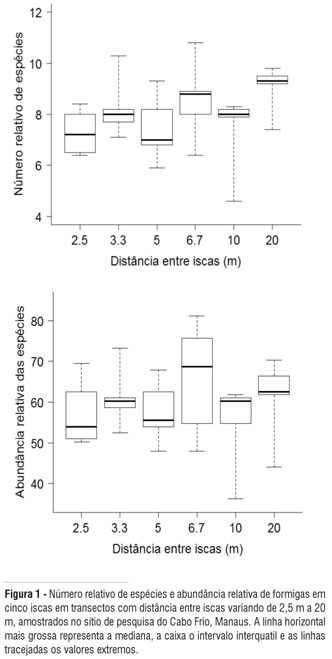Baits are widely used to investigate the activity of terrestrial and arboreal ants, but also can be used to estimate the ant abundance and species richness. Despite the fact that baiting are cheap and easy to implement, many factors, such as the distance between baits, may influence the estimate of ant species richness and abundance. In this study, we evaluated the effects of bait spacing on abundance and the number of ant species. We also demonstrate which distance between baits showed the best relationship between costs and number of ant species sampled. We sampled 30 transects of 100 m with bait spacing ranging from 2.5 to 20 m, spread over 1 km² of a "terra-firme" forest situated at North of Manaus. The bait spacing did not affect the ant diversity estimative. Regardless bait spacing, the number of species collected every five baits was around 8, and the average abundance was approximately 50 individuals. However the number of species per bait was higher in transects with larger bait spacing. Transects with bait spacing of 10 m and 20 m, collected 50% more species than transects with baits placed 2.5 m and 3.4 m apart. Our results suggest that at this forest, the most efficient sampling design using only baits would be place 450 baits every 10 m or 20 m at the forest floor
conservation; environmental impact report; sampling effort; soil invertebrates; species accumulation curve; tropical forest





